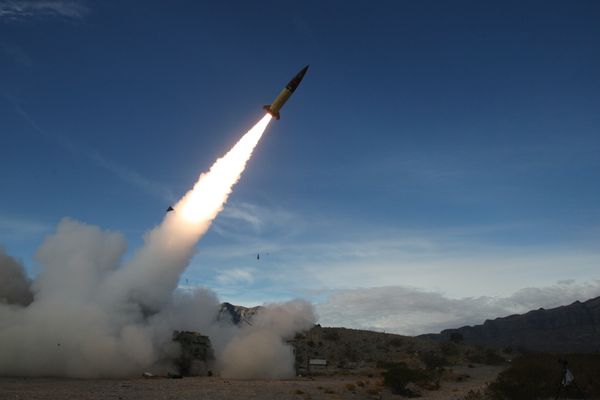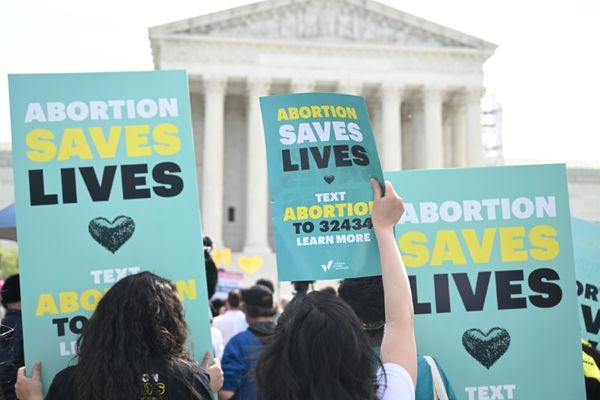
KABUL: The Taliban captured two major Afghan cities, the country's second- and third-largest after Kabul, and a strategic provincial capital on Thursday, further squeezing the embattled government just weeks before the end of the American military mission in Afghanistan.
According to a senior Afghan security source, the Taliban have also captured the key southern city of Lashkar Gah, which was evacuated by the military and government officials after striking a deal with the militants.
The seizure of Kandahar and Herat marks the biggest prizes yet for the Taliban, who have taken 12 of Afghanistan's 34 provincial capitals as part of a weeklong blitz.
The capture of the city of Ghazni, meanwhile, cuts off a crucial highway linking the Afghan capital, Kabul, with the country's southern provinces, all part of an insurgent push some 20 years after US and Nato troops invaded and ousted the Taliban government.
While Kabul itself isn't directly under threat yet, the losses and the battles elsewhere further tighten the grip of a resurgent Taliban, who are estimated to now hold over two-thirds of the country and continue to press their offensive.
US sends troops to evacuate embassy staff
With security rapidly deteriorating, the United States planned to send in 3,000 troops to help evacuate some personnel from the US Embassy in Kabul. Separately, Britain said about 600 troops would be deployed on a short-term basis to support British nationals leaving the country.
"We are further reducing our civilian footprint in Kabul in light of the evolving security situation," US state department spokesman Ned Price told reporters, while noting the embassy would remain open.
"This is not abandonment. This is not an evacuation. This is not the wholesale withdrawal," he said.
The Pentagon said 3,000 US troops would be deployed to Kabul within the next 24 to 48 hours, underscoring that they would not be used to launch attacks against the Taliban.
UK defence secretary Ben Wallace said London would send 600 of its own troops to evacuate its nationals and "support the relocation of former Afghan staff who risked their lives serving alongside us".
Price said the United States would also start sending in daily flights to evacuate Afghan interpreters and others who assisted the Americans and are fearful for their lives due to the Taliban's sweeping offensive.
Thousands of Afghan flee homes
Thousands of Afghans have fled their homes amid fears the Taliban will again impose a brutal, repressive government, all but eliminating women's rights and conducting public amputations, stonings and executions. Peace talks in Qatar remain stalled, though diplomats met throughout the day.
The latest US military intelligence assessment suggests Kabul could come under insurgent pressure within 30 days and that, if current trends hold, the Taliban could gain full control of the country within a few months. The Afghan government may eventually be forced to pull back to defend the capital and just a few other cities in the coming days if the Taliban keep up their momentum.
The onslaught represents a stunning collapse of Afghan forces and renews questions about where the over $830 billion spent by the US Defense Department on fighting, training those troops, and reconstruction efforts went - especially as Taliban fighters ride on American-made Humvees and pickup trucks with M-16s slung across their shoulders.
Afghan security forces and the government have not responded to repeated questions from journalists over the days of fighting, instead issuing video communiques that downplay the Taliban advance.
In Herat, Taliban fighters rushed past the Great Mosque in the historic city - which dates to 500 BC and was once a spoil of Alexander the Great - and seized government buildings. Witnesses described hearing sporadic gunfire at one government building while the rest of the city fell silent under the insurgents' control.
Herat had been under militant attack for two weeks, with one wave blunted by the arrival of warlord Ismail Khan and his forces. But on Thursday afternoon, Taliban fighters broke through the city's defensive lines and later said they were in control.
Afghan lawmaker Semin Barekzai also acknowledged the city's fall, saying that some officials there had escaped. Witnesses described seeing Taliban fighters once-detained at Herat's prison now freely moving on the streets.
It wasn't immediately clear what happened to Khan, who earlier had been described as under attack with his forces at a government building.
In Kandahar, the Taliban seized the governor's office and other buildings, witnesses said. The governor and other officials fled the onslaught, catching a flight to Kabul, the witnesses added. They declined to be named publicly as the defeat has yet to be acknowledged by the government.
The Taliban had earlier attacked a prison in Kandahar and freed inmates inside, officials said.
Earlier Thursday, the militants raised their white flags imprinted with an Islamic proclamation of faith over the city of Ghazni, just 130 kilometers (80 miles) southwest of Kabul.
Ghazni provincial council member Amanullah Kamrani alleged that the provincial governor and police chief made a deal with the Taliban to flee after surrendering. Taliban video and photos purported to show the governor's convoy freely passing by insurgents as part of the deal.
Afghan Interior Ministry spokesman Mirwais Stanekzai later said the governor and his deputies had been arrested over that alleged deal. The officials could not be immediately reached for comment.
Stanekzai also acknowledged in a video message that parts of Ghanzi had fallen, though he insisted government security forces "do exist" in the city.
The loss of Ghazni - which sits along the Kabul-Kandahar Highway - could complicate resupply and movement for government forces, as well as squeeze the capital from the south.
Already, the Taliban's weeklong blitz has seen the militants seize nine other provincial capitals around the country. Many are in the country's northeast corner, pressuring Kabul from that direction as well.
In southern Afghanistan, the Taliban's heartland, heavy fighting continued in Lashkar Gah, where surrounded government forces hoped to hold onto the capital of Helmand province.
Nasima Niazi, a lawmaker from Helmand, criticized ongoing airstrikes targeting the area, saying civilians likely had been wounded and killed.
"The Taliban used civilian houses to protect themselves, and the government, without paying any attention to civilians, carried out airstrikes," she said.
With the Afghan air power limited and in disarray, aviation tracking data suggested US Air Force B-52 bombers, F-15 fighter jets, drones and other aircraft were involved in the fighting across the country, according to Australia-based security firm The Cavell Group.
US Air Force Maj. Nicole Ferrara, a Central Command spokeswoman, acknowledged that American forces "have conducted several airstrikes in defense of our Afghan partners in recent days." However, she declined to offer any details on the attacks or to discuss the Afghan complaints of civilian casualties.
Late Thursday night, an Afghan official, speaking on condition of anonymity to discuss developments, said the Taliban have also taken much of western Badghis province - but not the provincial army corps and the intelligence department. A Taliban tweet claimed the insurgents captured the seat of the provincial governor, the police headquarters and all other government offices.
Even as diplomats met in Doha, Qatar on Thursday, the success of the Taliban offensive called into question whether they would ever rejoin long-stalled peace talks aimed at moving Afghanistan toward an administration that includes members of the current Afghan government and the Taliban. Instead, the group could come to power by force - or the country could splinter into factional fighting like it did after the Soviet withdrawal in 1989.







